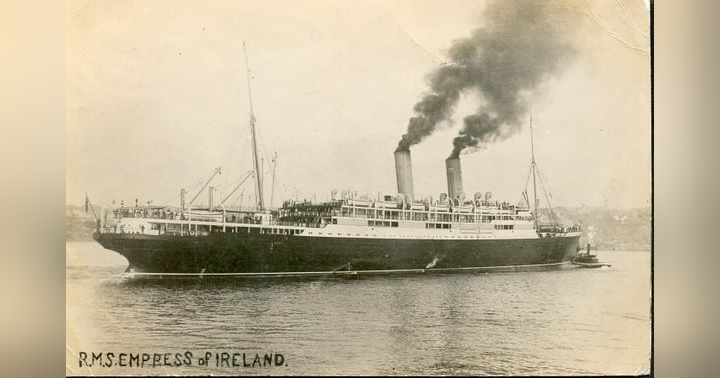Charting the Depths: Underwater Archaeology off the BC Coast

Princess Sophia hard aground on Vanderbilt Reef. Winter & Pond Postcard
(J. Marc Collection)
When it comes to shipwreck exploration along the British Columbia coast, few names carry the quiet authority and enduring curiosity of Jacques Marc. A forestry professional by trade and an underwater archaeologist by passion, Marc has spent decades balancing his “day job” with a deep-sea pursuit that reveals the forgotten stories resting beneath coastal waters.
Marc is what’s known as an avocational archaeologist—a term that simply means he practices archaeology as a dedicated volunteer rather than a full-time professional. As the Explorations Director of the Underwater Archaeological Society of British Columbia (UASBC), he exemplifies the growing movement of citizen scientists who lend their time, skills, and passion to research that might otherwise go undone.
From Diver to Discoverer
Marc’s journey into underwater archaeology began in 1976, when he first took up scuba diving. Like many divers, he was initially drawn to marine life and underwater photography. But one dive in Bedwell Bay changed everything. He descended on what was thought to be the HMCS Cranbrook, a Canadian naval vessel. But something didn’t add up. The wreck he saw had two rudders and was longer than the Cranbrook’s known dimensions.
With his forestry background in measurement and documentation, Marc set out to verify the wreck's identity and discovered it wasn’t the Cranbrook at all. It was actually the VT-100, a former U.S. yard-class minesweeper. That first discovery sparked a lifelong fascination with the coast's maritime past.
What is Avocational Archaeology?
Marc explains that avocational archaeologists are volunteers, often with unrelated day jobs, who dedicate their free time to archaeological exploration. In Marc’s case, weekends and vacation time were spent diving, surveying wrecks, and contributing to UASBC projects. These volunteers work with the same tools and standards as professionals but typically without financial compensation.
“We’re measuring things, we’re recording things, we’re photographing things,” says Marc. “And ultimately, we publish the results so other people can access them.”
Preserving BC’s Underwater Heritage
The UASBC has played a vital role in documenting shipwrecks along the British Columbia coastline. To date, they’ve contributed details on more than 130 wrecks to the provincial archaeology database. The Society also offers an in-depth training course called Underwater Archaeology for Divers (UAD), developed specifically for the Pacific Northwest’s diving conditions.
Research is at the heart of every expedition. The goal is always to understand what lies beneath before a dive ever takes place.
Once divers locate a wreck, whether by side-scan sonar or visual search, they begin careful documentation, measuring the dimensions, sketching site plans, and, in some cases, building detailed 3D models using photogrammetry.
Memorable Wrecks and What They Teach Us
Marc shared three unforgettable experiences that reflect the range and emotion of shipwreck exploration.
The Lord Western, a teak and mahogany vessel discovered in Sidney, BC, was nearly destroyed by a logging operation. After a grassroots push to protect it, Marc and his team excavated the site over two summers. Though they uncovered artifacts, including two telescopes and Chinese ceramics, the vessel’s identity remained a mystery until archival research connected it to the Lord Western, which sank in 1853.
Lord Western Telescope. Credit: UASBC Collection
In another standout expedition, Marc joined Dr. James Delgado in the Canadian Arctic to survey the Bay Maud, a ship originally used by famed Norwegian explorer Roald Amundsen. The icy water, just two degrees Celsius, made diving grueling, but the result was a comprehensive site plan. In 2016, the ship was raised and returned to Norway.
Perhaps the most emotionally resonant dive came at the site of the Princess Sophia, which sank in 1918 off Alaska with the loss of all 360 people aboard. Contrary to rumors, Marc confirmed that the ship’s boilers were intact, and that her anchors had never been dropped, a haunting detail that raises questions about the choices made in those final hours. “It was the moody wreck,” Marc says, describing one dive as ethereal with tropical-like visibility, and another as dark and ominous. (Read more about this experience on Marc's blog on this site.
Honoring the Past, Diving into the Future
Marc’s work doesn’t stop with historical wrecks. Recently, he helped place a memorial plaque on the site of a World War II-era plane crash in Saanich Inlet, where four airmen lost their lives in a training exercise. The plane’s remnants rest 90 feet underwater, accessible to experienced divers and now marked for remembrance.
Thanks to advances in technology, UASBC teams are exploring deeper and more complex sites than ever before. With technical divers and rebreather systems, they can now reach depths of 250 to 300 feet.
Join the Adventure
The UASBC welcomes new members from all diving backgrounds. Their monthly meetings, which often featuring guest speakers, are open to anyone, and their training course helps divers of all levels develop the skills necessary to participate in meaningful archaeological work.
As the Society prepares for its 50th anniversary in 2025, Marc remains at the center of its mission: exploring history, preserving maritime heritage, and sharing the stories found beneath the waves.
Want more fascinating stories from the deep?
Catch the full interview with Jacques Marc on the Fascinated by Shipwrecks podcast.
Listen or watch anytime. You'll see more photos in the video version!
© 2024 Fascinated by Shipwrecks






